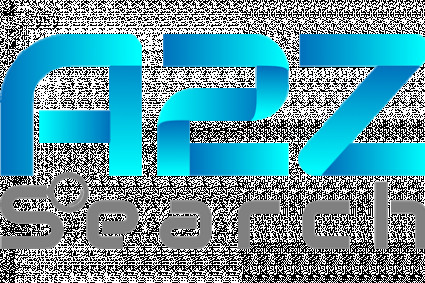
Right-angle power cords serve as practical and frequently disregarded components in power accessory setups. The cables are flexible and have a compact design. The organizing cable also delivers many advantages to multiple applications.
Specialised power cords solve space and cable strain issues in various places. They also resolve these problems in industrial equipment. The following article examines how to select appropriate 90-degree power cords. Here is a list of their benefits and employment areas.
What Are 90-Degree and Right-Angle Power Cords?
The 90-degree power cord is also known as the right-angle power cord. It features a plug that bends toward a right angle rather than displaying a straight extension. The design makes the plug correctly bend at a right angle. This enables the cord to easily attach to equipment. This results in a reduced cable strain.
With limited space, Power cords with right-angle plugs are suitable. Areas like televisions, office furniture and kitchen equipment as well as industrial machines. This design protects the cable from harm. It also reduces unplug risks to achieve better safety.
Benefits of Using a 90-Degree or Right-Angle Power Cord
1. Space-Saving Design
A 90-degree power cord can fit in tight spaces. The traditional power cords usually stick out. It is difficult to get furniture or an appliance higher up on the wall. On the other hand, a right-angle power cord lets users place their devices properly. Don't worry about having to deal with the cord's obstruction.
2. Reduced Cable Strain and Longevity
When plugging a straight power cord into a device using a confined space, the cord bends sharply. This causes it to wear and tear over time. A right-angle power cord does this for you and naturally. It sends the cable down the surface. This creates minimal stress on the plug and prolongs the cord’s life.
3. Improved Safety
Loose or damaged power cords can represent an electrical hazard. This can be a short circuit or fire. A 90-degree power cord will ensure a secure connection. It will not allow the power to go unstable since it was unplugged.
4. Better Cable Management
Messy cables are simply not welcome in any household. A right-angle power cord makes it easy to organize cables. It keeps things tidy in terms of clutter. They are neatly arranged, behind entertainment centers, workstations, or server racks.
Common Applications of 90-Degree Power Cords
Here are some common applications of the cords:
1. Home and Office Electronics
Household as well as office equipment needing power access required limited space. These include televisions, computer displays, printers and gaming devices. The right-angle design of power cords gives devices the option to sit close to walls and furniture because it makes efficient use of available space.
2. Kitchen Appliances
Power cords for refrigerators are placed next to wall surfaces or within cabinet space. You can set these devices with the correct positioning. This protects the cord from harm, a right-angle power cord is beneficial to use.
3. Industrial and Commercial Equipment
Production facilities together with workshops and data centers regularly operate their equipment. They use cables when space within the area remains minimal. A right-angle power cord serves as a reliable method. It doesn't create cord-related disorders. Examples: power machinery, networking equipment, and workstations.
4. Medical and Laboratory Equipment
Medical and scientific units depend on efficient power management to operate correctly. The 90-degree power cord creates a reliable connection. It creates a tidy setup which reduces cord-related danger points. It is safety critical.
5. Home Entertainment Systems
Flat-screen TVs with sound systems, and streaming devices need to be mounted on walls. They can also be placed in compact entertainment units. The right-angle power cord functions as a solution. It lets setups keep their appearance neat by hiding power wires from view.
Factors to Consider When Choosing a Right-Angle Power Cord
1. Plug Orientation
There are not all 90-degree power cords. There are, however, those that stretch left, right, up or down. You have to check the plug orientation. The next step is to pick an appropriate one.
2. Length of the Cord
The power cord should be the perfect length. The farther the device, the longer the cable. Similarly, a shorter cable goes with a near setup.
3. Compatibility with Devices
The 90° power cord should match up with voltage requirements. It is possible to run into performance and danger issues. This can be solved with a compatible cable.
4. Cable Gauge and Quality
There are different thicknesses, the wire gauge, of power cords. Here, the higher the number the thinner the wire. This makes it less able to carry more power. Quality materials and insulation contribute to Safety.
5. Connector Type
Different devices use different power connectors. Some common types include:
C5 ("Mickey Mouse")– Used for laptops and small electronics.
C7 ("Figure-8")– Found in gaming consoles and media players.
C13/C14 ("Kettle Plug") – Common for desktop computers and monitors.
C19/C20 – Used for high-power devices like servers and industrial equipment.
How to Maintain and Safely Use Right-Angle Power Cords
To ensure the longevity and safe operation of a 90-degree power cord, follow these tips:
1. Avoid bending the cord excessively
The product's tight-space focus is impaired when users twist the cord beyond necessity. Such motion gradually produces deterioration.
2. Do not overload the cord
No high-power appliances should connect to cords without their intended safety rating for heavy loads.
3. The Placement
Place the cord safely beyond all heat-producing elements. The high temperature causes insulation breakdown which leads to electrical faults.
4. Safety Checks
Regular examination should be performed. Check for signs of wear across the cord. Inspection of damaged power cords should lead to their immediate replacement to prevent safety risks.
5. Maintenance
You should use cable organizers to keep your cords organized. Velcro straps or cable clips prevent tangled wires.
Conclusion
The 90-degree cords effectively control power connections. These cords offer multiple benefits in various settings, including offices, homes, and industrial facilities.
Choosing the right right-angle orientation ensures efficient setup. Proper length and quality of power plugs ensure reliable performance. Well-designed right-angle power cords enhance convenience and protect devices. They also promote organized and clean environments.




